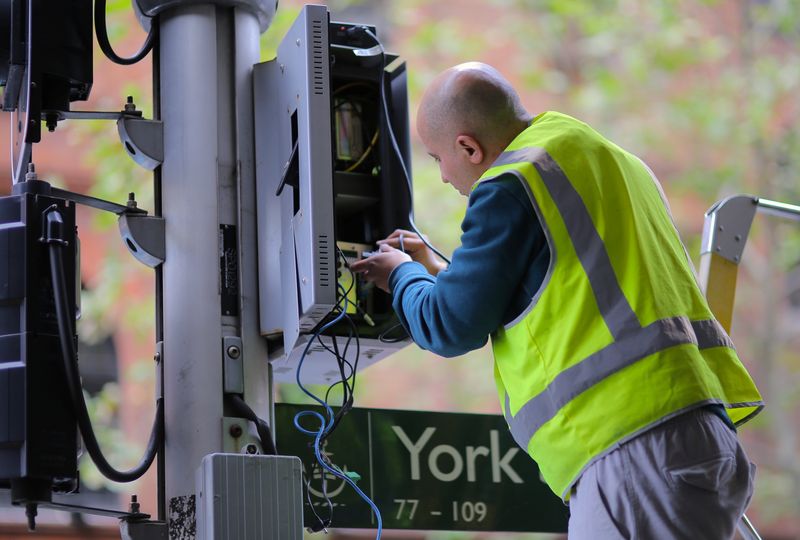Analysis-Australia’s hot jobs market keeps rate cuts out of reach
2024.11.27 20:11
By Stella Qiu
SYDNEY (Reuters) – Australia’s world-beating labour market is one of the main obstacles stopping the country’s central bank from joining global peers in reversing the most aggressive policy tightening cycle in decades.
The Reserve Bank of Australia was relatively late in joining the worldwide race to rapidly tighten monetary policy back in 2022 and did not raise rates as much as other banks, arguing it needed to ensure efforts to hose down inflation didn’t push up unemployment.
More than two years on, Australia’s benchmark rates – though still below those in the U.S. – may not see their first cut for half a year, according to market pricing, as a labour crunch keeps inflationary pressures elevated.
Duncan McKimm, who runs an aged care facility in the town of Grafton, about 600 km north of Sydney, has struggled to hire nurses.
“We’ve been running ads for two years or more to find those. So it’s not that we haven’t been trying,” said McKimm, CEO at Clarence Village. It currently employs seven nurses and needs another three or four to help care for 74 senior residents.
“If we could, we’d employ these people but…there aren’t actually enough in Australia.”
His inability to fill those vacancies means he is unable to meet new government requirements for care facilities to have a registered nurse present around the clock.
Similar struggles are seen across Australia’s care industry, which accounted for a big share of employment gains over the past year.
The healthcare and social assistance sector still has more than 60,000 vacancies open even though it already filled over 100,000 jobs last year, almost 30% of all the job gains, official data showed.
That’s mostly good for workers, with more women entering the labour force, driving the participation rate to a record high and keeping the jobless rate at 4.1% for about six months or so. The most recent data shows Australian jobs grew 2.7% year-on-year, well above gains of 1.4% in the U.S. and 1% in the euro bloc.
But that’s not so good for anyone waiting for the RBA’s first rate cut.
While headline inflation was 2.8% in the September quarter, dipping into the RBA’s 2-3% target band for the first time since 2021, that was mostly driven by temporary government rebates.
Financial markets and a growing number of economists have pushed back their forecast for a first rate cut to May from February.
That timing would be inconvenient for Prime Minister Anthony Albanese’s centre-left government, which has promised to ease cost of living pressures and needs to call an election no later than May.
In contrast, both the Federal Reserve and the European Central Bank have already chopped rates by 75 basis points.
Australia now finds itself in a shrinking group of developed economies, such as Norway, that still boast strong job markets and are yet to loosen monetary policy.
The surprising labour strength is the reason the National Australia Bank (OTC:) pushed out its call for a rate cut to May from February, warning that there is a real risk that policy rates stay on hold even deeper into 2025.
Tapas Strickland, head of market economics at NAB, said while difficulties finding suitable workers had eased somewhat from the pandemic, the market was as tight as it had been during Australia’s mining boom around 2007.
“If you’re a firm looking to increase output, instead of increasing hours for your existing workforce, you’re basically being forced to recruit new people,” Strickland said.
STATE DEMAND
Public sector jobs – which are concentrated in healthcare, education and public administration – rose over 30% from a year ago as federal and state governments ramped up spending to cope with longer term needs such as an aging population.
That was in part thanks to the National Disability Insurance Scheme, a A$44.3 billion ($28.77 billion) programme to pay carers to take care of disabled people, financed by back-to-back budget surpluses.
The increased spending is one reason Australia has avoided outright recession even though the RBA has jacked up interest rates 425 basis points since May 2022 to a 12-year high of 4.35%. Jobs in the private sector, in contrast, have fallen 2.2%.
Leon Goldfeld, head of multi-asset solutions at JPMorgan, said since the pandemic, governments around the world have resorted to fiscal policy to support growth, which translates into higher longer-term inflation.
“Prior to COVID episode, the mindset was very much around fiscal austerity… We believe the role of fiscal policy, particularly in downturns, is going to be much more proactive than it has been,” said Goldfeld.
In Australia, worker supply has not been able to catch up with demand, even though its labour force has expanded more than 10% from pre-pandemic levels, much faster than the U.S. and Canada.
Data from SEEK, an employment site, showed job ads in October across sectors from construction, healthcare to education more than 20% to 50% higher than 2019 levels. A report from Jobs and Skills Australia, a government advisory body, showed 33% of occupations reporting labour shortages in 2024.
All of that has only increased demand for more foreign workers.
Most of McKimm’s staff are local but now he has to look overseas for the nurses.

“It is something we’re moving towards, but it is also not a very quick process and it is quite expensive especially for small organisations like ours,” he said.
($1 = 1.5396 Australian dollars)








